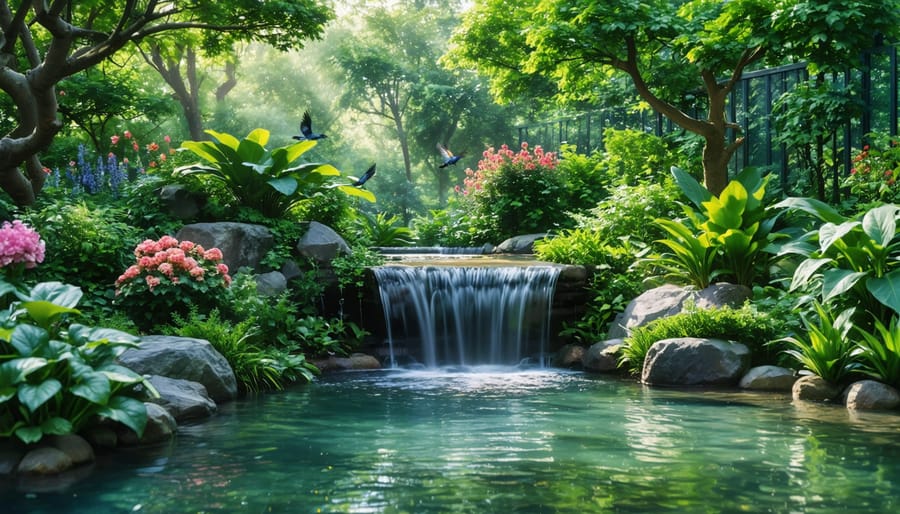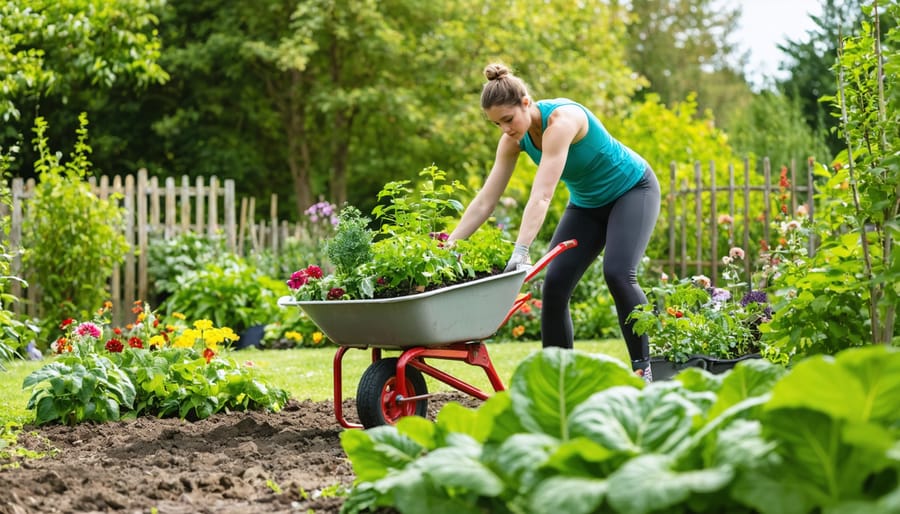Close your eyes in your garden and listen to the gentle rustle of leaves dancing in the breeze, the soft trickle of flowing water, and the melodic songs of native birds. These tranquil nature sounds do more than create ambiance—they actively reduce stress hormones, lower blood pressure, and enhance our connection to the natural world. Studies show that just 15 minutes of natural soundscaping can significantly improve mental clarity and emotional well-being.
Creating your own symphony of peaceful garden sounds isn’t just a luxury—it’s an essential element of modern garden design. Whether you’re working with a small urban patio or sprawling backyard, thoughtfully placed water features, wind chimes, and carefully selected plants can transform your outdoor space into a restorative sanctuary. The key lies in layering different natural elements to create a harmonious soundscape that drowns out urban noise while fostering a deeper connection to nature.
Imagine stepping into your garden and being greeted by a gentle chorus of rustling ornamental grasses, the soft patter of rainfall on broad-leaved plants, and the soothing sounds of local wildlife. This natural orchestra not only enhances your garden’s sensory experience but also creates a peaceful retreat that beckons you to pause, breathe, and reconnect with the natural world.
The Science Behind Nature’s Calming Sounds
Why Water Features Soothe Our Minds
The soothing effects of water features in gardens tap into our deep psychological connection with nature. Scientists have discovered that the sound of flowing water produces what’s known as “pink noise” – a balanced, natural frequency that helps regulate our brain waves and promotes relaxation. This explains why many people find the stress relief benefits of gardens with water features particularly powerful.
Our brains interpret the gentle sounds of flowing water as non-threatening background noise, which helps mask disruptive sounds like traffic or neighborhood activity. This natural white noise effect allows our minds to achieve a state of gentle alertness while remaining calm – similar to the feeling you get while sitting beside a peaceful stream.
The rhythmic nature of water sounds also mirrors our natural breathing patterns, which can unconsciously encourage slower, deeper breathing. This biological synchronization helps lower blood pressure and reduce cortisol levels, making water features particularly effective at creating tranquil spaces in your garden where you can decompress and find your center.
The Therapeutic Effects of Bird Songs
Recent studies have shown that bird songs are more than just pleasant background noise – they’re nature’s stress relievers. When we hear birds chirping, our bodies naturally respond by lowering cortisol levels, reducing anxiety, and improving our overall mood. This therapeutic effect is so powerful that some hospitals and wellness centers now use recorded bird songs in their healing environments.
The variety of bird songs matters too. Different species create distinct patterns and frequencies that work together like nature’s symphony. The gentle cooing of doves can slow your heart rate, while the cheerful melodies of songbirds can boost mental alertness and creativity. Morning bird songs are particularly beneficial, as they help regulate our natural wake-sleep cycles and start our day on a positive note.
Even brief exposure to bird songs can make a difference. Just 10 minutes of listening to natural bird calls can help decrease stress levels and improve focus. This is why many gardeners report feeling more relaxed and centered when working in spaces where birds are active. Creating bird-friendly gardens not only supports local wildlife but also contributes to our own well-being through these natural sound therapies.
Creating Your Garden’s Natural Symphony
Water Feature Selection and Placement
Water features are the heart of any tranquil garden soundscape, and choosing the right one can transform your outdoor space into a peaceful retreat. Fountains are perhaps the most versatile option, offering sounds ranging from gentle trickles to more dramatic cascades. Wall-mounted fountains work wonderfully in small spaces, while tiered fountains create varied water music through multiple falling levels.
For a more natural feel, consider a small stream or waterfall feature. These can be designed with different rock formations to create unique sound patterns – flat rocks produce gentle spreads of water, while irregular stones create more dynamic bubbling sounds. A pond with a simple bubbler or spitter can provide subtle background sounds that won’t overwhelm your space.
Placement is crucial for optimal sound distribution. Position your water feature where you’ll hear it best from your favorite sitting areas, but remember that sound travels upward, so slightly elevated locations work well. Consider the prevailing wind direction too – placing your feature downwind from seating areas ensures the peaceful sounds reach you consistently.
For the most soothing effect, aim for water drops to fall no more than 12 inches, creating gentle splashes rather than loud splats. Multiple smaller water features strategically placed throughout your garden can create a more immersive experience than a single large one, allowing you to enjoy calming water sounds from various vantage points.
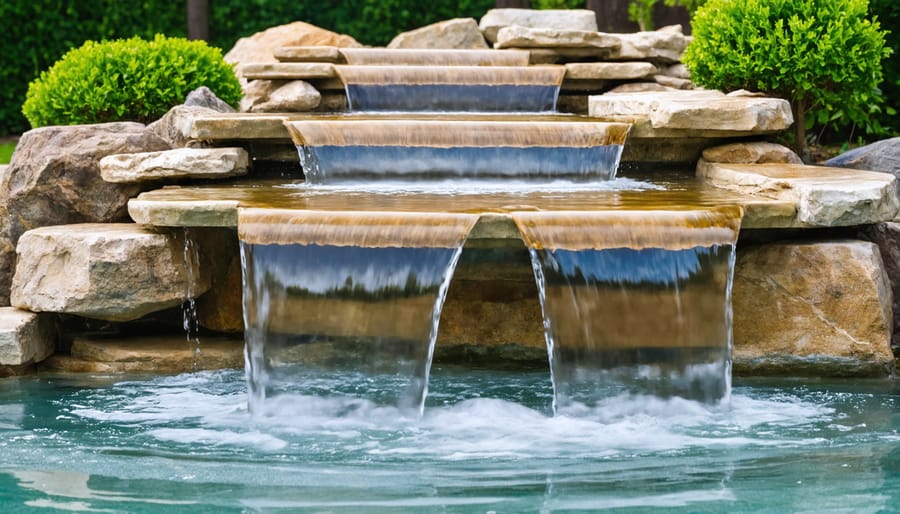
Plants That Attract Songbirds
Creating a songbird-friendly garden starts with selecting the right plants that provide food, shelter, and nesting opportunities. Native berry-producing shrubs like elderberry, serviceberry, and winterberry holly are particularly attractive to melodious birds such as cardinals, finches, and thrushes. These plants not only offer nutritious berries but also create dense cover where birds feel safe to sing and nest.
Flowering plants that produce seeds are equally important. Consider adding black-eyed susans, purple coneflowers, and sunflowers to your garden. These plants provide a natural food source throughout summer and into fall, while their sturdy stems offer perfect perches for singing birds.
Trees play a crucial role in attracting songbirds. Deciduous varieties like oak, maple, and birch support numerous insect species that birds feed on, while evergreens like spruce and pine provide year-round shelter and nesting sites. The height variation these trees create also allows different bird species to establish their own preferred singing territories.
For smaller spaces, consider vertical gardening with climbing vines like native honeysuckle or trumpet creeper. These plants attract both insects and hummingbirds, adding different layers of natural melody to your garden. Remember to include a water feature nearby – the combination of flowing water and bird songs creates the perfect peaceful atmosphere.
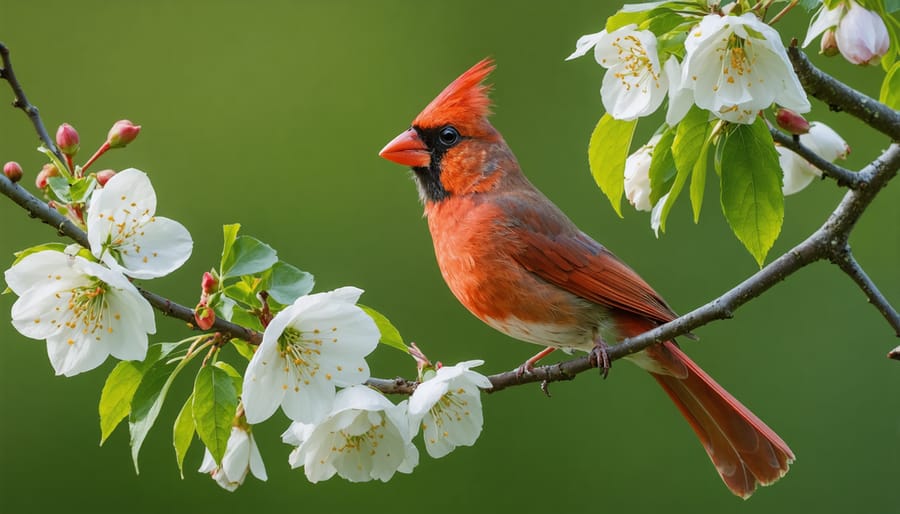
Wind-Responsive Plants and Chimes
The gentle rustling of leaves and the melodic tinging of wind chimes create some of nature’s most soothing sounds. To cultivate these calming elements in your garden, consider planting tall ornamental grasses like Miscanthus or Pennisetum, which produce a delightful whisper with the slightest breeze. Bamboo varieties are particularly effective, as their hollow stems and numerous leaves create a distinctive peaceful sound that many find deeply relaxing.
For a more dramatic rustling effect, consider adding quaking aspens or silver birch trees, known for their dancing leaves that shimmer and rustle in the wind. Paper bark maples and eucalyptus trees also offer wonderful sound properties with their papery leaves.
When it comes to wind chimes, choose materials carefully for the most pleasing sounds. Traditional metal tubes produce clear, resonant tones, while bamboo chimes create softer, more organic sounds. Copper and brass chimes tend to offer warmer tones that blend beautifully with natural garden sounds. Position your chimes thoughtfully – try hanging them near seating areas but not so close that they become overwhelming on windy days.
For the best effect, combine different sound-making elements at varying heights. Low-growing grasses can provide a gentle background whisper, while taller plants and suspended chimes create layers of sound that transform your garden into a natural symphony.
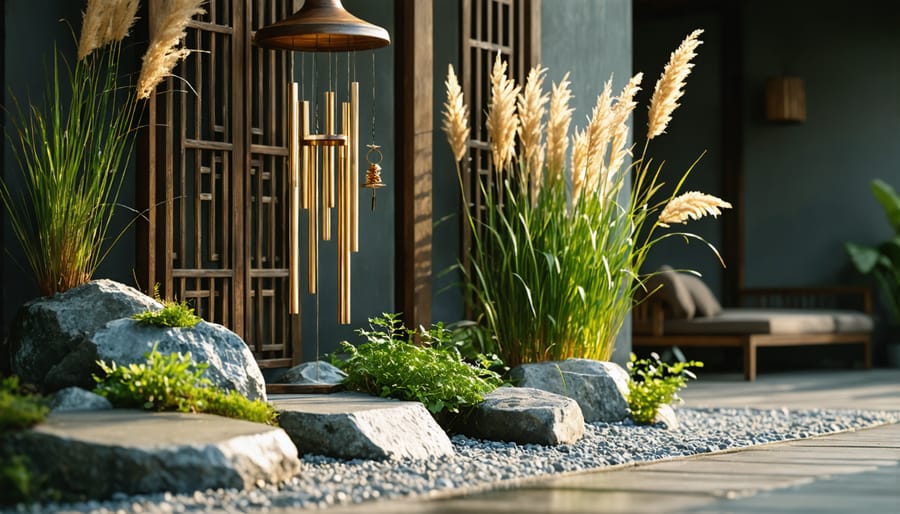
Balancing Your Garden’s Acoustic Elements
Sound Mapping Your Garden
Creating a sound map for your garden helps orchestrate a more immersive and peaceful outdoor experience. Following biophilic garden design principles, start by walking your space at different times of day, noting existing sounds and potential areas for enhancement.
Begin with your garden’s perimeter, identifying natural barriers or areas where you might want to minimize unwanted noise. Consider placing dense shrubs or bamboo screens along busy boundaries to create a sound buffer. Next, map out your primary seating or relaxation zones – these will be your focal points for introducing calming sounds.
Layer your sound elements strategically. Position wind chimes in areas that catch natural breezes, perhaps near garden entrances or pathways. Create “sound pockets” by clustering plants that attract songbirds, such as berry-producing shrubs, near quiet sitting areas. Water features work best when placed where their gentle sounds can be heard from multiple vantage points without overwhelming the space.
Remember to include plants that create their own music – tall ornamental grasses that rustle in the wind, bamboo stems that clack gently together, or even the soft patter of rain on large-leaved plants like hostas. Consider seasonal changes too – spring might bring different bird songs than summer, while autumn leaves create their own unique rustling symphony.
Managing Unwanted Noise
Creating a peaceful garden sanctuary often means finding creative ways to minimize unwanted urban noise. One of the most effective natural sound barriers is a dense hedge or living wall of evergreen plants. Plants like bamboo, holly, or laurel not only buffer sound but also add year-round greenery to your space.
Strategic placement of trees and shrubs can make a significant difference. Plant them in layers, with taller species at the back and shorter ones in front, to create a more effective sound barrier. This approach also provides habitat for birds, whose songs will add pleasant natural sounds to your garden.
Water features are excellent for masking unwanted noise. A simple fountain or small waterfall creates a consistent, soothing sound that helps drown out traffic or neighborhood noise. Position these features near seating areas for maximum benefit.
Wind chimes and rustling ornamental grasses can also help create a more peaceful atmosphere. Consider planting varieties like maiden grass or feather reed grass, which produce gentle swooshing sounds in the breeze.
For immediate results, temporary solutions like outdoor speakers playing nature sounds can help while your living sound barriers grow. Place these discretely among plants and keep the volume low – the goal is to create a subtle background ambiance rather than dominate the space.
Remember to work with your garden’s natural acoustics. Hard surfaces reflect sound, so incorporate soft materials like mulch on pathways and consider vertical gardens on walls to absorb noise.
Seasonal Sound Considerations
Creating a year-round peaceful soundscape requires thoughtful planning and an understanding of how nature’s symphony changes with the seasons. Spring brings the cheerful chorus of returning birds, while summer fills the air with gentle bee buzzing and rustling leaves. Through mindful garden design, you can maintain these soothing elements throughout the year.
In spring, position early-blooming flowers like crocuses and snowdrops near seating areas to attract the first pollinators. Plant native species that provide natural shelter and food for local birds, ensuring their continued presence in your garden. Consider installing nesting boxes in quiet corners to encourage permanent avian residents.
Summer offers abundant opportunities for natural music. Tall ornamental grasses create wonderful whispers in the breeze, while wind chimes can complement these sounds without overwhelming them. Place water features where they’ll catch afternoon light and create gentle splashing sounds that mask any unwanted noise from beyond your garden.
As autumn approaches, focus on plants that produce interesting seed heads and rustle beautifully in fall winds. Ornamental grasses like feather reed grass and fountain grass maintain their structure well into winter, providing both visual interest and gentle sounds. Leave some perennials standing through winter to create subtle music when frost-covered stems sway in the breeze.
Winter needn’t be silent – evergreen trees and shrubs provide year-round shelter for birds and create soft sounds as wind passes through their branches. Consider adding features like bamboo stands that maintain their structure and sound-making properties even in cold weather.
Throughout the seasons, maintain areas of dense planting to buffer external noise and create pocket spaces where natural sounds can be enjoyed without interruption. Remember that different weather conditions will affect your garden’s acoustic properties, so create variety in your plantings to ensure there’s always something to listen to, no matter the season.
Creating a sound garden filled with tranquil nature sounds is more than just a gardening project – it’s an investment in your wellbeing and connection to the natural world. By incorporating the elements we’ve discussed, from strategically placed water features to wind-activated chimes and carefully selected plants that attract songbirds, you can transform your outdoor space into a peaceful sanctuary that engages all your senses.
Remember that you don’t need to implement everything at once. Start small, perhaps with a simple wind chime or bird feeder, and gradually build your sound garden as you observe what works best in your space. Pay attention to how different weather conditions affect your garden’s soundscape and adjust elements accordingly.
The beauty of a sound garden lies in its ever-changing nature. Each season brings new sounds, from spring’s chorus of birds to summer’s buzzing insects and autumn’s rustling leaves. By creating a space that welcomes these natural musicians, you’re not only enhancing your garden’s appeal but also contributing to local biodiversity.
Take time to sit quietly in your garden and appreciate the symphony of sounds around you. Whether you’re enjoying your morning coffee or unwinding after a long day, these natural sounds will help reduce stress and create moments of true tranquility in your daily life. Your journey to creating a more peaceful outdoor space starts now – and the rewards will grow with each passing season.

